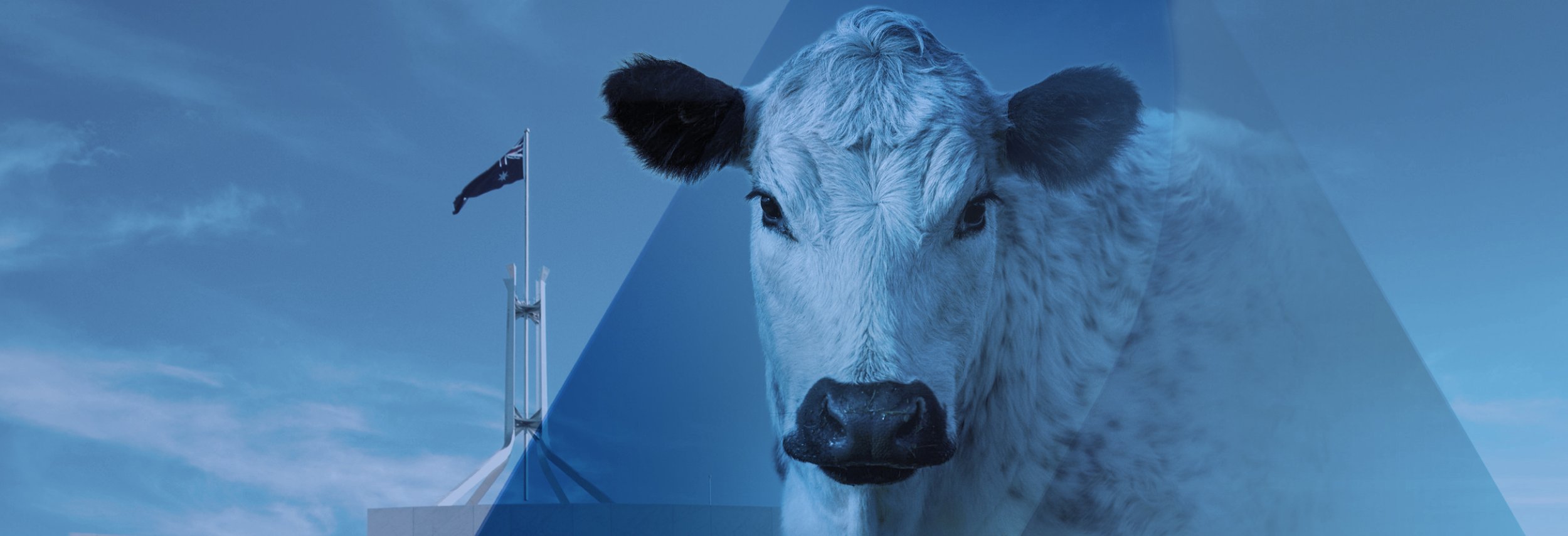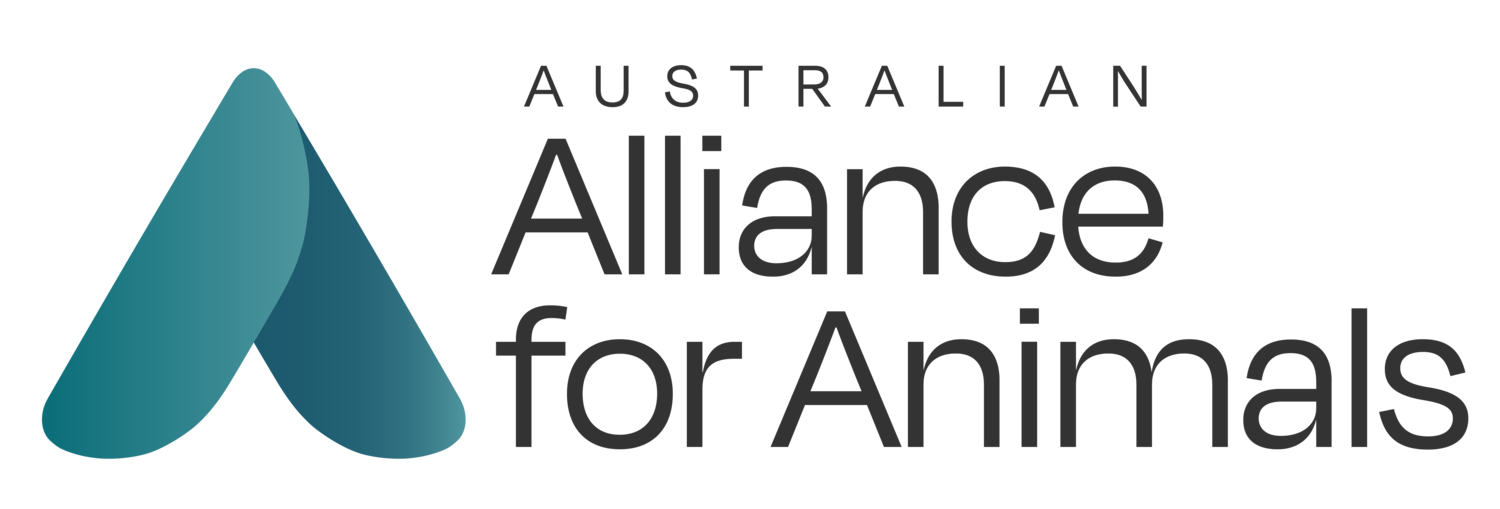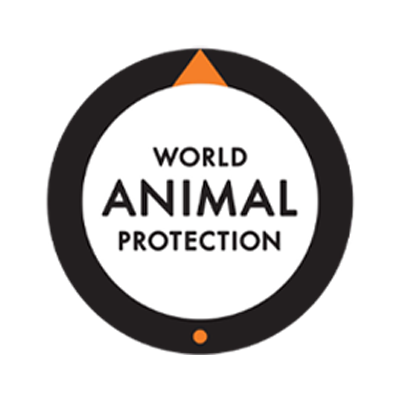Better standards for chickens farmed for meat
Image: Animals Uncovered
The Australian Alliance for Animals is committed to raising the welfare standards for chickens farmed for meat in Australia.
The Better Chicken Commitment is a pledge committing those who have signed up to introduce higher welfare standards for all chickens in their supply chain. It focuses on switching the breeds of chickens used, improving their living conditions, and adopting more humane slaughter methods. While widely adopted in North America and Europe, progress in Australia has stalled.
As consumer awareness and demand for ethical food sources increase, the Better Chicken Commitment offers Australian businesses and producers a chance to align with public expectations by committing to higher chicken welfare standards.
Image: RSPCA UK
Part of a strategic partnership
The Alliance for Animals is one of fifteen leading animal welfare organisations supporting the Australia-New Zealand Better Chicken Commitment. We are working closely with Alliance core member World Animal Protection and our New Zealand-based colleagues at Animals Aotearoa to bring the Better Chicken Commitment to Australia through the Better Chicken Australia campaign. This is the latest phase of the campaign, focusing on building public awareness, direct engagement with food businesses, and mobilising the public to create a mandate for change.

We’ve launched this campaign because the treatment of meat chickens is one of the biggest but least recognised animal welfare problems in Australia today.
Image: Farm Transparency Project
Most chickens raised for meat lead miserable lives.
In Australia, a staggering 700 million meat chickens are raised and slaughtered every year – and most of these birds lead short, miserable lives.
Australia has poor welfare laws and standards for meat chickens, leaving millions of animals to suffer every day. Further, Australia’s standards for meat chickens haven’t changed much in the last decade, unlike some other parts of the world.
Chickens are genetically selected to grow too big and fast for their own bodies to handle. They don’t get enough space, light, or clean air. And they are killed using outdated, inhumane methods.
They deserve better.
That’s why we’re calling for the industry to make serious changes to the welfare of chickens bred for meat.
Image: Farm Transparency Project
What is the Better Chicken Australia campaign?
The Better Chicken Australia campaign is working to build public awareness of the problems and solutions to chicken welfare in the Australian meat industry.
The Better Chicken Commitment calls for specific changes to significantly improve the welfare of farmed chickens, including:
Higher welfare, slower growing chicken breeds that promote good welfare
Comfortable, healthy living conditions, where each chicken has enough space, light and clean air
Slaughter methods that are more humane, with effective stunning and no live shackling
You can read more at the Better Chicken Australia website here.
Food businesses are responsive to consumer demand. The Better Chicken Australia campaign is based around mobilising a consumer base concerned about the welfare of chickens raised for meat, to apply pressure to food businesses to change their supplier standards.
Australian chickens need you.
Take the pledge to support the Better Chicken Commitment and show food businesses and the chicken industry that Australians want higher welfare standards for chickens.
-
Like most Australians, I care about the welfare of farmed animals.
Chickens farmed for meat are one of the most poorly treated animals in the agriculture industry. Every year, millions of Aussie chickens suffer short, miserable lives before being slaughtered using outdated and cruel methods.
I want that to change.
As many Australians like me grow more aware and concerned about where our food comes from, I'm looking to restaurants and shops to match my expectations for better animal welfare, sustainability, and food quality.
I’m calling on food businesses to sign the Better Chicken Commitment and introduce higher welfare standards for all chickens in their supply chain. This includes better living conditions, more humane slaughter methods, and switching to healthier, slower growing chicken breeds that promote good welfare.
It’s time to change the way we raise chickens for meat in Australia.
The Better Chicken Commitment must be the new standard for Aussie chickens.
FAQs about chicken welfare
-
The Better Chicken Commitment is a commitment for businesses to introduce higher welfare standards for all chickens in their supply chain. It sets targets for the most important welfare issues in chickens raised for meat, based on the latest welfare science. The Better Chicken Commitment calls for:
Higher welfare, slower growing chicken breeds
Comfortable, healthy living conditions, where each chicken has enough space, light and clean air
Slaughter methods that are more humane, with effective stunning and no live shackling
You can read more about the specifics of the BCC and why these changes are so important here.
Add your name to the Better Chicken Commitment pledgeto show food businesses and the industry that there's appetite for change. This will show the industry how important these changes are.
Your voice will lead change. Find out more about taking action here.
If you're a food business interested in signing up to the Better Chicken Commitment, get in touch and we’ll help you through the process.
-
Chickens farmed for meat in Australia face many serious welfare issues. They are genetically selected to grow too big and fast for their own bodies to handle. They don’t get enough space, light, or clean air, and they are killed using outdated, inhumane methods.
Breed
The breeds of chickens used for meat in Australia been genetically selected to grow so fast it hurts.
They struggle to stand and move around under their own body weight. They suffer from lameness, painful skin burns, bone deformities, metabolic diseases and high death rates.
These fast-growing chicken breeds are designed to maximise meat production and profit, at the cost of chicken welfare.
Living Conditions
Modern chicken farming involves tens of thousands of birds being packed into sheds at high densities. They may never experience natural light or clean air, have enough room to scratch around or dust bathe, and there may be nowhere to perch.
Without enough space, they can struggle to move around freely. Chickens can’t act like chickens here. When these chickens are fast-growing breeds, you have a perfect environment for creating sick, stressed, suffering birds.
Slaughter
Australian chickens routinely experience fear, pain and suffering during slaughter due to the use of outdated, inhumane methods. Many slaughterhouses still use shackling and electrical stunning, where chickens are hung upside down by their legs and dipped into an electrified water bath to be stunned before slaughter. This is stressful, painful and unreliable, leaving some chickens fully conscious when their throats are slit.
The Better Chicken Commitment includes requirements to address each of these three key aspects of chicken welfare.
-
The welfare of chickens raised for meat is a huge problem for two reasons. First, because the scale of the industry is immense, affecting hundreds of millions of birds. Secondly, because most of these chickens will live short, miserable lives.
The chicken meat industry impacts the biggest number of animals of any land-based animal industry. The Australian chicken industry raises and slaughters over 700 million chickens every year. That’s about 49kg of chicken meat eaten per person every year – way more than any other type of meat.
The scale is so enormous that it’s hard to think of chickens as the individual animals that they are. They have needs and wants, things they do for fun, and friendships with the other chickens they live with. While their lives are short when we use them for food, that doesn’t mean we need to accept them suffering.
It’s challenging to raise millions of chickens while also making sure each one of those chickens lives a happy life. Which is why the Better Chicken Commitment focuses on changing the farming practices – breed, living conditions and slaughter – that have the most negative impact on the quality of life for chickens raised for meat. Adopting the BCC requirements will make the lives of millions of chickens in the future much better.
-
The chickens used for meat are not the kind of chickens you might keep in your backyard. They’re specialised breeds created to grow as fast as possible, with as much breast muscle as possible. This is because it is more profitable to send ‘meatier’ birds to slaughter in a shorter amount of time. It's a more cost-effective way to get chicken meat, however, this comes at a severe cost to chicken welfare.
In Australia, almost every chicken raised for meat is one of these fast-growing breeds. They reach slaughter weight (the size that whole chickens are sold at, which is around 2kg)in just 38 days (5 weeks). They are also very imbalanced, with such heavy breasts that they often struggle to stand and walk. If they fall over onto their backs, they may be unable to get up to reach food or water.
Because they’re bred to grow so fast and so big, they suffer serious health issues like bone deformities and lameness. Sometimes these health issues are so severe that they die before they reach slaughter weight. The meat chicken industry can absorb this loss because the chickens that do survive grow so fast and large. If you took one of these chickens home to keep as a pet, they wouldn’t live long no matter how well you cared for them. They’re not built to survive their own body’s weight.
-
When it comes to farmed animal welfare, Australian laws are weak. You might expect Australian laws to protect chickens from pain, fear and suffering, just like laws protect pets and wildlife. That’s not the case. The Australian government lags far behind community expectation and the latest science. As a result, millions of farmed animals suffer every year.
The minimum legal standards for chickens raised for meat in Australia are set by the Model Code of Practice for the Welfare of Animals – Domestic Poultry. These standards let chickens live in crowded, stressful conditions with no ability to perform natural behaviours like perching and foraging.
A new standard, the Australian Animal Welfare Standards and Guidelines for Poultry, was endorsed by State and Territory governments in 2022. These standards are only slightly better than the previous Code, and they still don’t require farmers to provide perches for chickens or give them enough space to move around freely. What’s more, these standards haven’t yet been written into law, so they can’t even be enforced!
This is why it’s so important for food businesses to sign up to the Better Chicken Commitment. We can’t rely on government regulation to protect chickens from suffering or ensure they live lives worth living. If we want to be sure that the chicken we eat came from a bird that was happy and healthy, we need a promise we can trust. The Better Chicken Commitment provides that promise.
Image: RSPCA UK
Related resources
Explore our collection of articles and media releases about the welfare of chickens raised for meat.
Find out more about farmed chicken welfare from our core member organisations

















